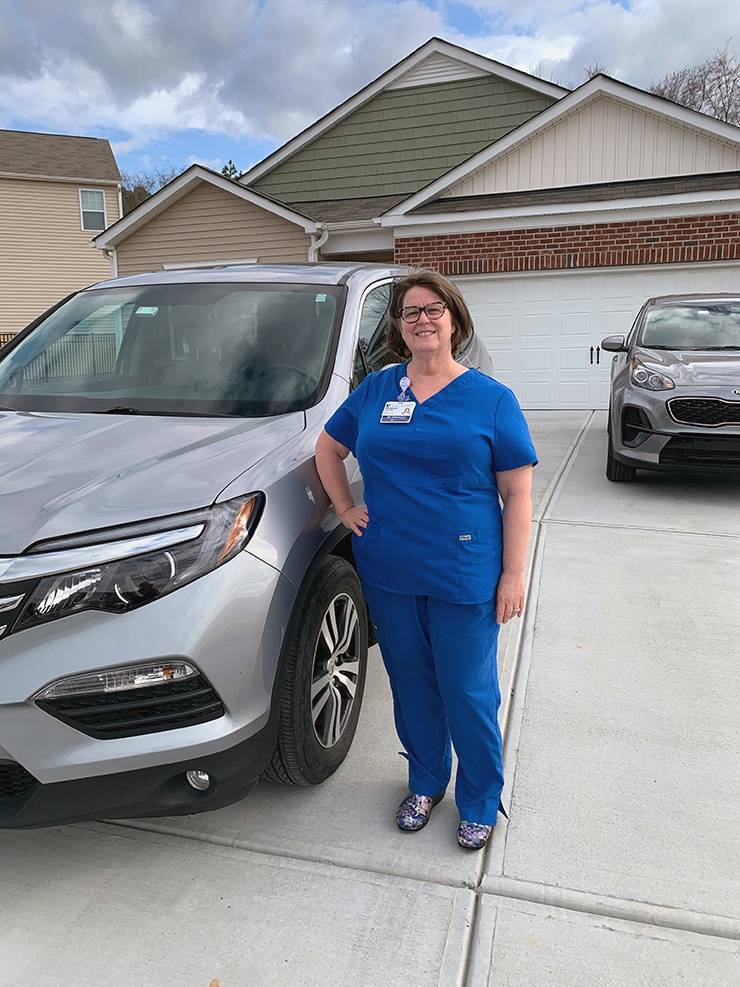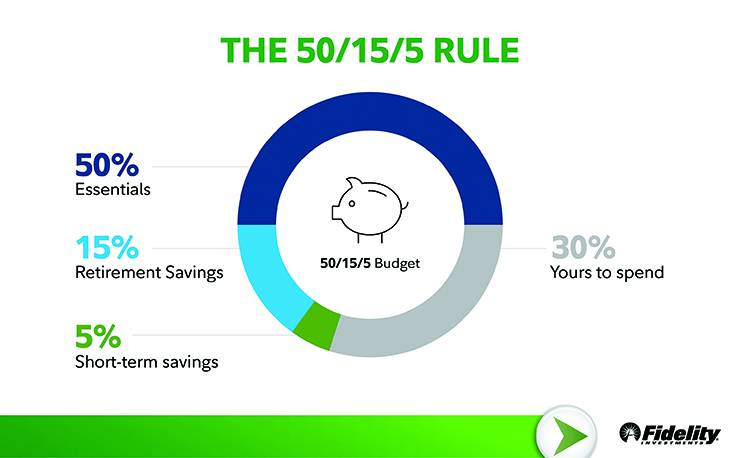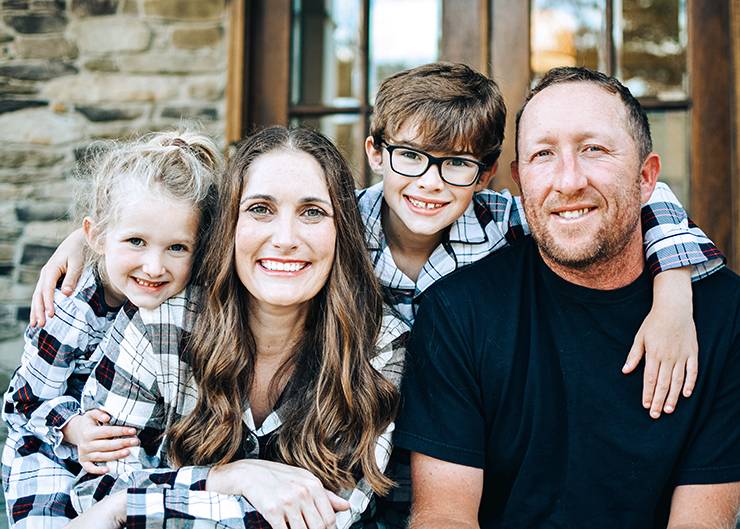How We’re Saving Money During the Pandemic
From fuel to clothing, lifestyle changes in COVID-19 present opportunities to cut spending

When Lori Levy looks back at the past year, she’s painfully aware of what she’s missed out on because of the pandemic. Her son didn’t have an in-person high school graduation, and she’s gone nearly two years without seeing her daughter, who lives in California.
 But there have been small silver linings: she’s saved money on fuel, campus parking and fewer restaurant meals. With the savings, she helped buy her son a car for college and is planning a trip to California later this year.
But there have been small silver linings: she’s saved money on fuel, campus parking and fewer restaurant meals. With the savings, she helped buy her son a car for college and is planning a trip to California later this year.
“It’s just nice to know that you have that money when you need it,” said Levy, a nurse educator in the Clinical Education and Professional Development Department.
Throughout the pandemic, most Duke employees have seen their spending habits altered, resulting in opportunities to save money.
According to the Federal Reserve Bank of St. Louis, Americans’ personal saving rate – the percentage of disposable income that’s saved – went from 8.3 percent in February of 2020 to 33.7 percent in April of 2020. In January of 2021, it remained high at 20.5 percent.
“On one hand, we have murky waters ahead, but on the other hand, people are finding themselves with extra cash,” said Benjamen Parker, a retirement planner with Fidelity, the primary record keeper for Duke’s Faculty and Staff Retirement Plan. “So now, they want to know what they should do with this extra money?”
As you ponder how the pandemic has shaped your financial situation, consider how some colleagues have found ways to save money.
Be Smart with Extra Savings
When he speaks to Duke employees seeking financial advice, Parker often starts with recommending people build a household budget.
If you haven’t done so already, a budget is the easiest way to see where your money goes and make sure that it covers important expenses and priorities, such as retirement and emergency savings.
Fidelity recommends using the 50/15/5 approach, where 50 percent of your income goes to essentials, 15 to retirement savings and five for emergency savings. The ideal amount of emergency savings would be enough to cover three-to-six months of expenses.
 When it comes to the extra money saved from pandemic-related lifestyle changes, Parker recommends using the money to pay off high-interest debt such as credit cards or to build up an emergency savings fund or increase your retirement contribution.
When it comes to the extra money saved from pandemic-related lifestyle changes, Parker recommends using the money to pay off high-interest debt such as credit cards or to build up an emergency savings fund or increase your retirement contribution.
After a year-long suspension of contributions to the faculty and staff retirement plan due to the financial pressures of the COVID-19 pandemic, contributions will return as scheduled on July 1, 2021.
Casual Savings on Clothing
With a whiteboard, multiple computer monitors and constellations of sticky notes on her wall, Emily Jackson has built a home workspace that has plenty of the touches of her on-campus office in Erwin Square.
 A major advantage for her home office is that Jackson can wear whatever she’d like while working there, including comfortable sweatpants and casual shirts. That’s had an effect on Jackson’s finances as she doesn’t need to shop for new expensive work clothes or get her slacks, sweaters and blazers dry cleaned.
A major advantage for her home office is that Jackson can wear whatever she’d like while working there, including comfortable sweatpants and casual shirts. That’s had an effect on Jackson’s finances as she doesn’t need to shop for new expensive work clothes or get her slacks, sweaters and blazers dry cleaned.
Prior to the pandemic, Jackson spent around $30 to $50 per week on dry cleaning.
“That’s definitely a savings for me,” said Jackson, a senior regulatory coordinator for the Duke School of Medicine’s Pediatrics Department.
According to consumer spending data compiled by the U.S. Bureau of Economic Analysis, Americans spent $23.9 billion less on clothing and footwear in the fourth quarter of 2020 than they did in the fourth quarter of 2019.
Jackson also said she’s appreciated not having to buy as many clothes, and if she ends up working on-site again, she hopes to keep her savings momentum going.
“When I look at my clothes, I just think, why did I need so much stuff?” Jackson said. “I think I’ll be more frugal once we go back.”
Fewer Trips to Gas Stations
When the COVID-19 pandemic struck, John Owens’ position as a senior IT analyst with Duke’s Office of Information Technology, went remote, meaning he no longer had to make the roughly 70-minute round trip commute from his home in Mebane to his office in the American Tobacco Campus.
 Before the pandemic, he’d fill up the tank in his Nissan Frontier pickup truck about once every 10 days. He estimates that the cost was around $150 a month. Now he can go several weeks between fill-ups. He said he’s used the extra money to build up his savings.
Before the pandemic, he’d fill up the tank in his Nissan Frontier pickup truck about once every 10 days. He estimates that the cost was around $150 a month. Now he can go several weeks between fill-ups. He said he’s used the extra money to build up his savings.
Data from the U.S. Bureau of Economic Analysis shows that in the fourth quarter of 2020, Americans spent $88.2 billion less on gasoline and other energy goods than they did in the fourth quarter of 2019.
The savings are just one of the positive developments Owens has experienced due to working remotely during the pandemic. Owens also appreciates having more time to get outdoors and walk and having the opportunity to eat healthier homemade meals instead of restaurant lunches at work, and
“Obviously, all of us were scared at first because we didn’t know how this was going to go and how it would affect us individually,” Owens said. “But finding positives anywhere has definitely been good.”
Family Finances
Since the start of the pandemic, Kate Davies has worked from home in Wake County alongside her two children, who are doing school work online.
 Without having to drive into campus each day, a commute that could take 45 minutes to an hour one way, she doesn’t have to arrange before-school care for her son, who is in elementary school.
Without having to drive into campus each day, a commute that could take 45 minutes to an hour one way, she doesn’t have to arrange before-school care for her son, who is in elementary school.
So in addition to saving about $150 per month on gas and another $20 per month for her campus parking permit, Davies doesn’t have to pay $100 per month for the before-school care. She’s been able to use those savings to take care of some debt and increase her contributions to her retirement account.
But for Davies, an administrative assistant with Duke Counseling & Psychological Services (CAPS), the money is not nearly a valuable as the gift of time with her kids.
“It’s lovely, actually,” Davies said. “I really enjoy it. I feel like I get to be a parent for the first time because I’m not shipping them off to somebody else to look after them. It’s been nice to see them learn, share meals together and take them to soccer practice, which was something I wasn’t able to do before.”
Fewer Lunches Out
Prior to the pandemic, Emily James, a regional development director for Duke University Development, would spend around half of her workdays on the road, strengthening Duke’s connections to alumni, parents and friends in places such as Chicago, Pittsburgh, Indiana, Iowa and South Carolina. The rest of the time, she’d be at her downtown Durham workspace.
 Both at home and away, James spent money on eating out while at work. While her meals were covered for business on the road, expenses such as a mid-day coffee were paid for out of her own pocket. And when working in Durham, she regularly went out to lunch to bond with the colleagues she rarely got to see.
Both at home and away, James spent money on eating out while at work. While her meals were covered for business on the road, expenses such as a mid-day coffee were paid for out of her own pocket. And when working in Durham, she regularly went out to lunch to bond with the colleagues she rarely got to see.
“Our office was in One City Center, which was great because it gave us access to a million restaurants,” she said.
Now that she’s working from home, James estimates that she’s saving around $30 to $50 per week by not eating out during the day. The U.S. Bureau of Economic Analysis reported that in the fourth quarter of 2020, Americans spent $194.9 billion less on food service and accommodations than they did in the fourth quarter of 2019.
James has been putting that savings to good use as it helped cover the cost of a tutor who would visit her house a few times a week to help her children who – until they returned to in-person learning in February – were completing their kindergarten and second grade schooling online.
“I was grateful to have her,” James said of the tutor. “She was a huge help.”
Got something you would like for us to cover? Send ideas, shout-outs and photographs through our story idea form or write working@duke.edu.